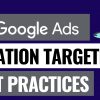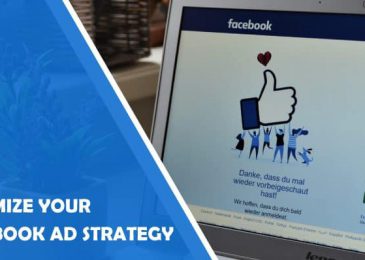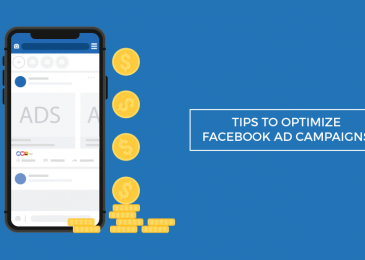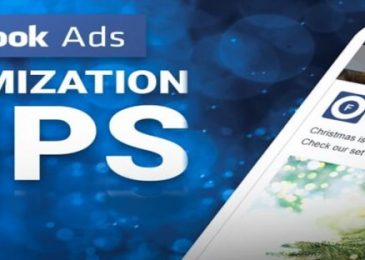Effective targeting is at the heart of any successful Facebook ad campaign. With billions of active users, Facebook provides unparalleled opportunities to reach diverse audiences. However, to truly capitalize on this potential, you need to master the art of ad targeting. This guide will walk you through advanced targeting strategies to ensure your ads reach the right people at the right time.
- Understanding Facebook’s Targeting Options
Before diving into advanced strategies, it’s essential to understand the basic targeting options available on Facebook:
- Demographic Targeting: Target users based on age, gender, education, job title, relationship status, and more. This allows for broad segmentation, ensuring your ads are shown to people who fit general criteria.
- Location Targeting: Reach users in specific geographic areas, from entire countries down to cities or postal codes. This is particularly useful for local businesses or region-specific promotions.
- Interest Targeting: Target users based on their interests, activities, Pages they like, and closely related topics. This helps in reaching people with specific hobbies or passions relevant to your business.
- Behavioral Targeting: Target users based on their purchase behaviors, device usage, travel habits, and more. This is useful for identifying and reaching people with specific buying behaviors or lifestyle characteristics.
- Creating Custom Audiences
Custom Audiences are a powerful tool for targeting users who already have some interaction with your business. Here’s how you can use them effectively:
- Website Traffic: Use Facebook Pixel to create audiences from your website visitors. You can target all visitors or specific segments based on pages they visited, time spent on site, or actions taken (e.g., add to cart).
- Customer Lists: Upload your customer email lists to create a Custom Audience. Facebook matches the emails with user profiles, allowing you to target your existing customers with specific offers or messages.
- App Activity: If you have a mobile app, you can create Custom Audiences based on user activity within your app. This includes people who have installed your app, made in-app purchases, or achieved certain milestones.
- Engagement: Create audiences from users who have engaged with your content on Facebook or Instagram. This includes people who watched your videos, interacted with your posts, or sent you messages.
- Leveraging Lookalike Audiences
Lookalike Audiences allow you to reach new people who are similar to your existing customers or high-value users. This can significantly expand your reach while maintaining relevance.
- Source Audience: Start with a high-quality source audience, such as your best customers or top website visitors. The more specific and valuable your source audience, the better the Lookalike Audience will be.
- Audience Size: Choose the size of your Lookalike Audience based on your goals. A smaller percentage (1-2%) is more similar to your source audience, providing higher relevance. Larger percentages (3-10%) expand your reach but might dilute similarity.
- Combining Lookalikes with Detailed Targeting: Enhance Lookalike Audiences by layering additional demographic, interest, or behavioral targeting. This ensures you maintain high relevance while expanding your reach.
- Using Detailed Targeting for Precision
Detailed targeting allows you to refine your audience further by combining various targeting options.
- Demographic and Interest Combinations: Combine demographic information with specific interests to narrow down your audience. For example, target young professionals interested in fitness or parents who like organic food.
- Behavioral Targeting Enhancements: Use behaviors to target specific user actions, such as frequent travelers or recent purchasers. This helps in reaching people who are more likely to engage with your ads.
- Exclusions: Refine your audience by excluding certain groups. For example, exclude existing customers from campaigns aimed at acquiring new leads, ensuring you don’t waste ad spend on people who have already converted.

- Advanced Retargeting Strategies
Retargeting is a powerful way to re-engage users who have already shown interest in your brand. Here are advanced strategies to enhance your retargeting efforts:
- Dynamic Retargeting: Show personalized ads to users based on products they viewed or added to their cart on your website. This is particularly effective for e-commerce businesses aiming to recover abandoned carts.
- Video Retargeting: Retarget users who have watched your videos but didn’t take further action. Segment audiences based on video watch time (e.g., 25%, 50%, 75%) and tailor your ads accordingly.
- Sequential Retargeting: Create a sequence of ads to guide users through the conversion funnel. For example, start with awareness ads, followed by consideration ads, and finally conversion-focused ads.
- Geo-Targeting for Local Relevance
Geo-targeting is essential for businesses that operate in specific locations or want to target users in particular areas.
- Local Awareness Ads: Use Local Awareness Ads to reach people near your business location. These ads include a call-to-action (CTA) like “Get Directions” or “Call Now,” driving immediate action.
- Event-Based Targeting: Target users in specific locations based on upcoming events or local happenings. This is useful for businesses looking to capitalize on local events to drive traffic or sales.
- Radius Targeting: Define a radius around your business location to reach nearby users. This is particularly useful for brick-and-mortar stores, restaurants, and local services.
- A/B Testing for Continuous Improvement
Testing different targeting strategies is crucial for optimizing your campaigns and improving performance.
- Test Audience Segments: Experiment with different audience segments to see which performs best. Compare various demographics, interests, and behaviors to identify the most responsive audience.
- Creative Variations: Test different ad creatives within the same audience to determine which visuals, headlines, and copy resonate most. Use these insights to refine your ad content.
- Performance Metrics: Monitor key metrics such as click-through rate (CTR), conversion rate, and cost per action (CPA). Use these data points to make informed decisions and adjust your targeting strategies accordingly.
- Staying Updated with Facebook’s Targeting Capabilities
Facebook regularly updates its advertising platform with new features and capabilities. Staying informed about these changes can give you a competitive edge.
- Follow Industry Blogs and Updates: Subscribe to industry blogs, Facebook’s business blog, and other reputable sources to stay updated on the latest targeting options and best practices.
- Join Online Communities: Participate in online forums, groups, and communities dedicated to Facebook advertising. Engaging with peers and experts can provide valuable insights and tips.
- Continuous Learning: Invest in continuous learning through online courses, webinars, and certifications. Platforms like Facebook Blueprint offer in-depth training on advanced targeting techniques and strategies.
Wrapping it up
Mastering Facebook ad targeting is essential for reaching the right audience and maximizing the impact of your advertising campaigns. By understanding and leveraging Facebook’s diverse targeting options, creating custom and lookalike audiences, using detailed and advanced retargeting strategies, and continuously testing and optimizing your efforts, you can significantly improve your ad performance. Stay proactive in learning and adapting to new features and trends to ensure your campaigns remain effective and relevant. Implement these advanced targeting techniques to elevate your Facebook advertising strategy and achieve better results for your business.




